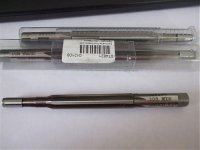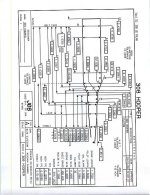The reamer pictured is a PTG .308 win match. I've had my mic all over it. I'm chambering Krieger 17 twister in HBR contour.
I was told there needs to be no, or little freebore. It appears this is the case.
Where the neck stops, and freebore part of the reamer starts, the reamer is .308. It starts to taper immediately (less than .010) to .300. over a .378 long cutting surface.
Alternately, the 300 mag, and ultr mag above have a longer .308 cutting edge, maybe .100
My 308 reamer should work with the light Berger bullets?
I was told there needs to be no, or little freebore. It appears this is the case.
Where the neck stops, and freebore part of the reamer starts, the reamer is .308. It starts to taper immediately (less than .010) to .300. over a .378 long cutting surface.
Alternately, the 300 mag, and ultr mag above have a longer .308 cutting edge, maybe .100
My 308 reamer should work with the light Berger bullets?



